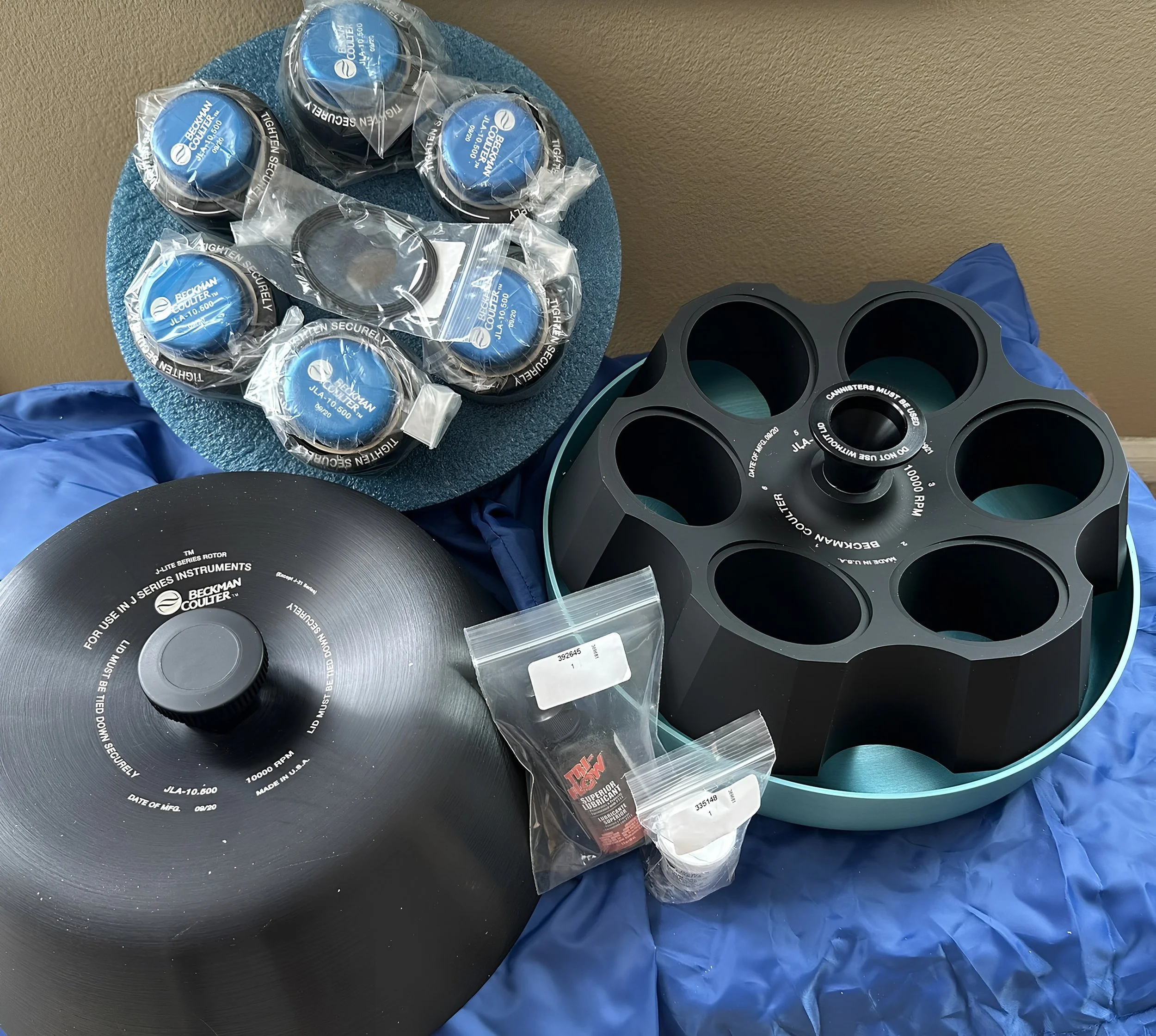Understanding Centrifuge Rotors: A Comprehensive Guide
Service AI
Centrifugation is a crucial process in biological research and bio-industrial production, allowing for the separation of particles based on their size, shape, and density. At the heart of this process is the centrifuge rotor, a device designed to hold tubes or bottles containing particle solutions. This guide provides an overview of different types of centrifuge rotors, their materials, parts, selection criteria, and maintenance practices to ensure optimal performance and longevity.
Types of Centrifuge Rotors:
Fixed Angle Rotors:
Design: Tubes are held at a specific angle to the axis of rotation.
Usage: Ideal for pelleting subcellular particles and short-column banding of viruses and organelles.
Examples: Beckman Coulter JA series.
Swinging Bucket Rotors:
Design: Containers are held in buckets that swing out to a horizontal position during centrifugation.
Usage: Best for isopycnic and rate zonal studies, where maximum resolution of sample zones is needed.
Examples: Beckman Coulter SW series.
Vertical Tube Rotors:
Design: Tubes are held parallel to the axis of rotation.
Usage: Useful for isopycnic separations with reduced run times.
Examples: Beckman Coulter V series.
Near Vertical Tube Rotors:
Design: Tubes are held at a slight angle, reducing run times while allowing components that do not band to either pellet to the bottom or float to the top.
Usage: Gradient centrifugation.
Examples: Beckman Coulter NV series.
Rotor Materials:
Aluminum: Lightweight and anodized for corrosion resistance.
Titanium: Stronger and more chemical resistant than aluminum, often finished with black polyurethane paint.
Composite Materials: Fiber-reinforced composites used for lightweight and high-strength applications.
Key Components of Rotors
Rotor Body: The main structure holding the tubes or bottles.
Rotor Lid: Secures the contents during centrifugation.
Rotor Handle: Used for handling and placing the rotor.
O-rings/Gaskets: Maintain atmospheric pressure within the rotor.
Overspeed Mechanism: Prevents the rotor from exceeding its maximum rated speed.
Selecting the Right Rotor:
When selecting a rotor, consider factors such as sample volume, the number of components to be separated, particle size, desired run time, and quality of separation. Fixed angle, swinging bucket, vertical tube, and near vertical tube rotors each offer unique benefits tailored to different types of samples and separation needs.
Special Purpose Rotors:
Zonal Rotors: Used for processing large sample volumes, ideal for continuous flow and high-density gradient separations.
Continuous Flow Rotors: Allow for the continuous introduction and removal of samples, often used for large-scale virus processing.
Elutriation Rotors: Combine centrifugation with counterflow elutriation for separating living cells.
General Operating Information:
Rotor Balance: Ensure the mass is evenly distributed to avoid vibrations and reduce wear on the centrifuge drive.
Overspeed Protection: Rotors are equipped with overspeed disks or mechanical devices to prevent operation beyond rated speeds.
Run Speeds: Follow manufacturer guidelines for maximum allowable speeds, especially when using dense solutions or special labware.
Care and Maintenance:
Proper maintenance extends rotor life and ensures safety:
Cleaning: Wash rotors immediately after use with corrosive materials, using mild detergents and soft brushes.
Decontamination: Use appropriate solutions to clean rotors contaminated with radioactive or pathogenic materials.
Sterilization: Autoclave rotors at 121°C for up to an hour; use ethanol or bleach for disinfection.
Inspection: Regularly check for signs of wear, corrosion, or damage, and replace worn components as needed.
Lubrication: Keep O-rings and metal threads lubricated to prevent wear and ensure proper sealing.
Rotor Failure:
In the event of rotor failure, follow specific procedures to ensure safety and determine the cause.
Partner with Service AI
At Service AI, we understand the critical role that centrifugation plays in scientific research and industrial applications. Our team of trained and experienced technical experts is here to help you with all your centrifugation needs. Whether you require guidance on selecting the right rotor, need assistance with maintenance practices, or seek reliable instrumentation, Service AI is your trusted partner.
We offer a wide range of refurbished scientific laboratory instruments and spare parts that you can rely on. Our instruments are recertified to ensure they meet the highest standards of performance and reliability. When you choose Service AI, you are choosing quality, dependability, and excellence in scientific instrumentation.
For more information on how we can support your scientific endeavors, visit our website and explore our Beckman product offerings. Let Service AI help you achieve your research goals with confidence.
